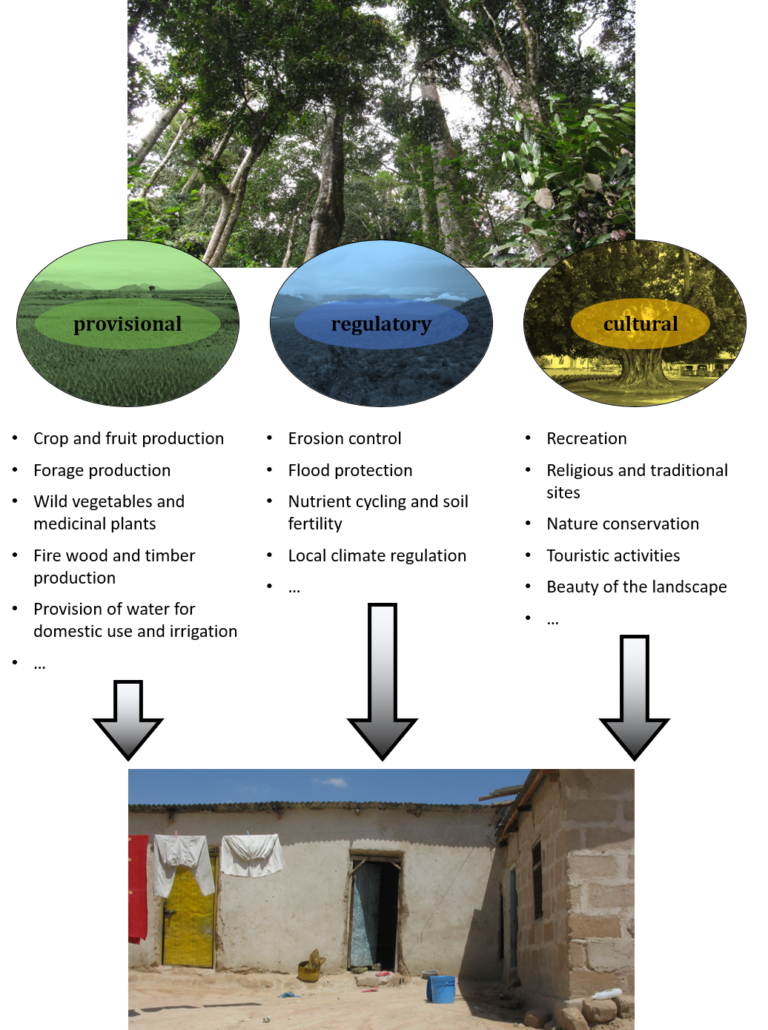Why ecology matters
Ecosystem loss and degradation
Despite our almost 50 years old knowledge about the limits of growth, resource-hungry human economic activities all around the globe keep increasing and lead to degradation and loss of natural ecosystems. Direct losses such as the destruction of forests, savannas, wetlands or coastal ecosystems are commonly associated with the expansion of settlements, infrastructure and agricultural land as well as with the exploitation of natural resources, such as timber, sand or mineral resources. Indirectly, ecosystems are affected by the human-induced changes of critical environmental conditions, including global climate change, shifts in fresh water availability and degradation of soils. These environmental changes cause expulsion and extinction of plant and animal species that cannot adapt to the new conditions. At the same time species that benefit from the new conditions can spread. Consequently, the composition of biotic communities in ecosystems is changing and species that cannot keep pace with the changes in their habitats become extinct.

Dependency on ecosystem services
The loss and degradation of natural ecosystems has serious impacts on our livelihoods since human life fundamentally relies on numerous products and services that originate from ecosystems. These can be specified as provisional, regulatory and cultural ecosystem services (ES). Typical examples are presented in the figure to the right.
The availability of ES for rural and urban communities is determined by type, condition and extent of the surrounding local ecosystems. Relevant for ES provision from ecosystems are the composition of plant, fungi and animal communities, their interactions with local environmental conditions and predominant ecosystem processes, such as primary production or decomposition. When vegetation is cleared, habitats for animals are destroyed or environmental conditions are changing due to different land use activities, the availability of ES is shifting correspondingly.
Additionally, the state of ecosystems at regional and global scales can affect ES provision at local scale. Some ecosystems of global relevance can influence the local availability of ES even if they are located far away from the particular area of interest. Examples are the Amazon rainforest or the Tundra belt with its permafrost soils in North America and northern Eurasia. Both ecosystems have enormous impacts on the global carbon cycle and extensive degradation can have significant effects on environmental conditions all around the globe.
Even though all people rely on ES, the degree of dependency is not equally distributed. Generally, rural communities are more directly dependent on ES than urban communities. Likewise, people in the global South rely much more directly on ES than people in the global North. Communities with higher dependency on ES are much more seriously affected by ecosystem degradation and depletion of ES than those with moderate dependency. Consequently, measures for sustainable ecosystem management, that foster the availability of ES, should firstly focus on the vulnerable rural communities in the global South.

Ecosystem service-based land use management
An innovative and effective strategy to tackle the challenges of global environmental change is to establish sustainable land use management systems that focus on the perseverative promotion of diverse ecosystem services and not on short-term financial profits. Such land use management systems should integrate existing ecosystems in development processes. Fertile land and productive ecosystems should be used sustainably for agriculture and forestry considering the preservation of their capacity to provide ES. As far as possible, building and infrastructure development should be restricted to inferior ecosystems with the least potential for ES provision. Fragile ecosystems with high biodiversity and extensive availability of ES should be conserved. Preconditions for successful implementation of ecosystem service-based land use management are comprehensive knowledge of the surrounding ecosystems and their contribution to ES provision, identification of ES with high relevance for livelihoods and acceptance of the necessity for sustainable land use management among the responsible policymakers, planners and land users.

Relevance of ecosystem services in science and policy
The research on ES gained significant pace with publications of the Millenium Ecosystem Assessment between 2003 and 2006. In the meantime, it developed into an important research branch in ecology, geography and social sciences. More and more stakeholders all around the globe now recognize the relevance of benefits from ecosystems for human well-being. In 2012 almost 100 national governments acknowledged the importance of biodiversity for sustainable development and the urgency for biodiversity conservation, and established the Intergovernmental Science-Policy Platform on Biodiversity and Ecosystem Services (IPBES).





